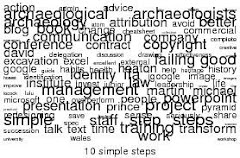• Who should be taking the risk?
The relationship between risk and profit in business is well established. Venture capitalists who support fledgeling enterprises whose success is uncertain reap the rewards when one of them takes off. Speculative investment of this kind is a highly specialised activity, restricted largely to those with sufficient spare cash to afford backing a run of losers without feeling the pinch. Most businesses are not aiming for the big kill; they are happy to make a small but regular surplus above their costs.
When a decorator is asked to price up re-painting a house, their uncertainty is quite limited: they may find that the cheapest paint is not available, and they overspend slightly on materials; or their painters are lazy, and they overspend on labour. But they can commit themselves to finishing the job for the price, being aware of the factors under they control they need to consider. The house's walls will not suddenly double in size after the quote was submitted.
Yet that is what archaeology does all the time. The level of certainty prior to excavation, even for fully evaluated sites, is set very low. Somebody is taking a big risk in signing up to deal with it (whatever may turn up). It could be argued quite strongly that if anybody is having to take such a risk, it should be the developer, who is in some sense a speculator, rather than the archaeological unit with limited margins and cash reserve.
• Price for a completed project, or rate for work done?
Thus as a starting principle archaeologists should limit their exposure to uncertainty. The 'open book' model of simply charging for work done is much healthier all round. (It should be noted that it is even on average cheaper in the end, since the archaeological contractor does not need to load in allowances for possible but rare circumstances such as human remains or ships). But if you do get locked into providing a single price, don't explain, don't break it down. For all the client knows you may be a bunch of eccentric millionaires undertaking the work as occupational therapy, and the cost covers the caviar and champagne at tea break. But the more detail you provide the more they will haggle.
Mike Heaton has argued for much greater transparency in costing (see 'Costing the earth' in The Archaeologist 59 (2006), p. 34-5 (large pdf of No. 59 Word document available here ), in line, ironically with usual practice in the construction industry, whose expectations of competitive tendering archaeologists say they are meeting (see bad habits, PPG16 section).
• Archaeology is expensive, but have you hired a plumber recently?
Sometimes developers will be shocked at the costs. But they shouldn't be. Everything costs a lot these days; anything that is labour intensive especially so. No building contractor would dream of moving tons of spoil by hand, because it would take too long and cost too much. In which case they should understand where the money is going.
• Don’t cut corners in pricing
If you are, reluctantly, pricing for a whole job, be clear about the likely final cost. Trying to sweeten the pill by putting in contingency sums is a recipe for future trouble: who decides when these are triggered? If the answer is you, you may as well just say the total, and if you feel like it, at the end under-charge them. Not that that's a good idea, since you cannot recover overspends from other projects.
• For most clients, certainty is more important than price
Archaeology is a headache. If the developer knows that it will go away at a specific time for a set amount they can stop worrying about it and just wait, chequebook in hand. Only the seriously mean or financially troubled will be desperate to shave off a little on a subcontractor cost. It's best to act as if the price is completely fixed.
• Overheads are expected
If you quote day rates, quote them all in. Don't give a basic wage and then add in extras to cover holiday, tax, and admin. Even including overheads developers will be astonished at archaeologists' low pay. Cost all inputs: office support, attendance at meetings, senior staff visiting site, travel. If you weren't doing the project you wouldn't incur the cost, so this is legitimate.
• Post-project review
This is the most important tip of all. Every project should end with a debriefing where lessons are learned: was it costed right? Which risks weren't allowed for? Where were the underspends: could they have been trimmed? Unless you actively review performance over time, the same mistakes will continue to recur.
Step 6: Are you costing projects realistically?
Who pays if you get things wrong?
Monday 3 December 2007
Step 6: Costs and risks
Subscribe to:
Post Comments (Atom)







No comments:
Post a Comment